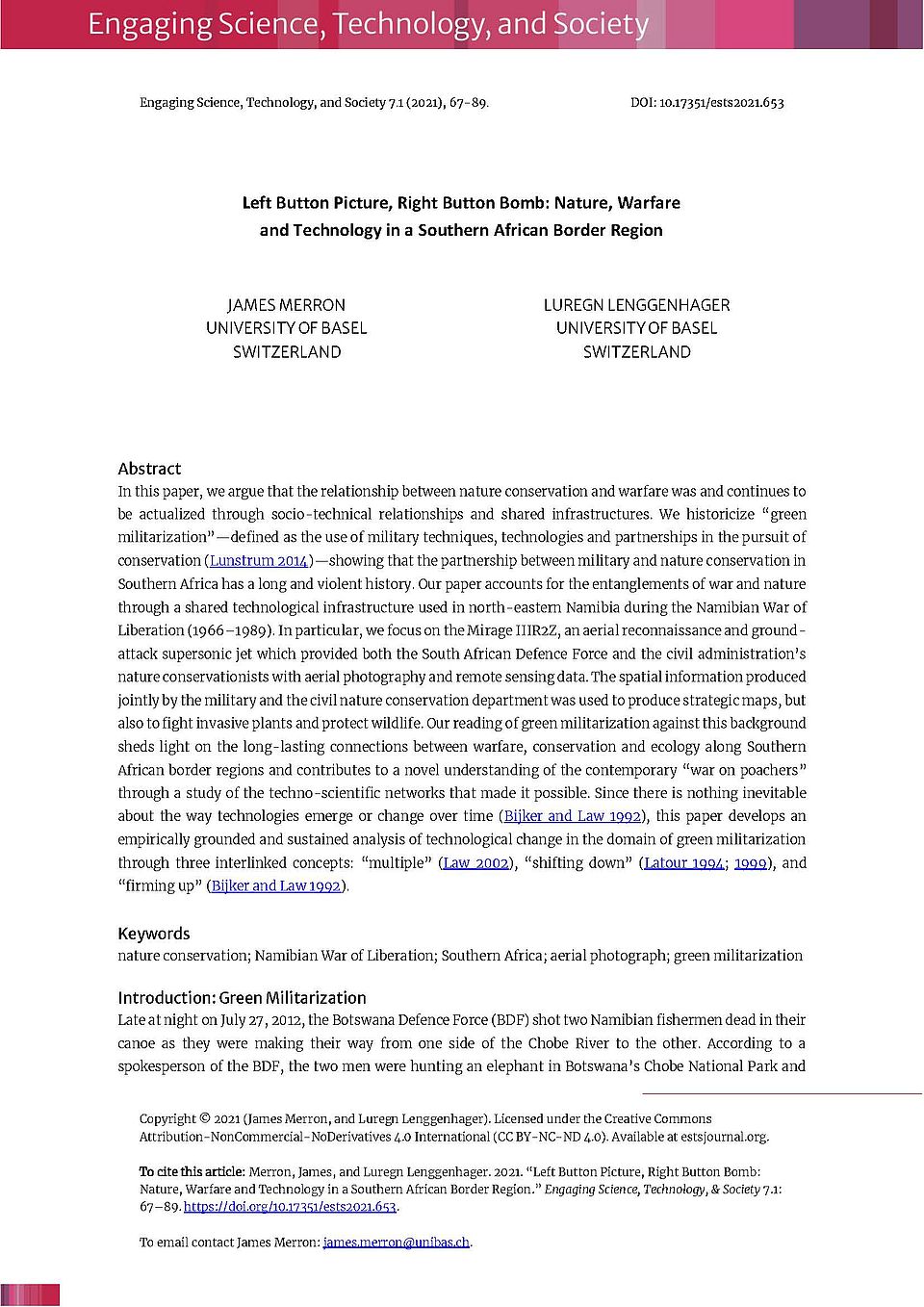News
/ Forschung
Publication: Left Button Picture, Right Button Bomb. Nature, Warfare and Technology in a Southern African Border Region

With a focus on the Mirage IIIR2Z, an aerial reconnaissance and ground-attack supersonic jet, James Merron and Luregn Lenggenhager examine the relationship between nature conservation and military technology in north-eastern Namibia during the Namibian War of Liberation (1966–1989). Their reading of “green militarization” sheds light on the connections between warfare, conservation and ecology along Southern African border regions and contributes to a novel understanding of the contemporary “war on poachers”.
Abstract
In this paper, we argue that the relationship between nature conservation and warfare was and continues to be actualized through socio-technical relationships and shared infrastructures. We historicize “green militari zation”—defined as the use of military techniques, technologies and partnerships in the pursuit of conservation (Lunstrum 2014)—showing that the partnership between military and nature conservation in Southern Africa has a long and violent history. Our paper accounts for the entanglements of war and nature through a shared technological infrastructure used in north-eastern Namibia during the Namibian War of Liberation (1966–1989). In particular, we focus on the Mirage IIIR2Z, an aerial reconnaissance and ground-attack supersonic jet which provided both the South African Defence Force and the civil administration’s nature conservationists with aerial photography and remote sensing data. The spatial information produced jointly by the military and the civil nature conservation department was used to produce strategic maps, but also to fight invasive plants and protect wildlife. Our reading of green militarization against this background sheds light on the long-lasting connections between warfare, conservation and ecology along Southern African border regions and contributes to a novel understanding of the contemporary “war on poachers” through a study of the techno-scientific networks that made it possible. Since there is nothing inevitable about the way technologies emerge or change over time (Bijker and Law 1992), this paper develops an empirically grounded and sustained analysis of technological change in the domain of green militarization through three interlinked concepts: “multiple” (Law 2002), “shifting down” (Latour 1994; 1999), and “firming up” (Bijker and Law 1992).

